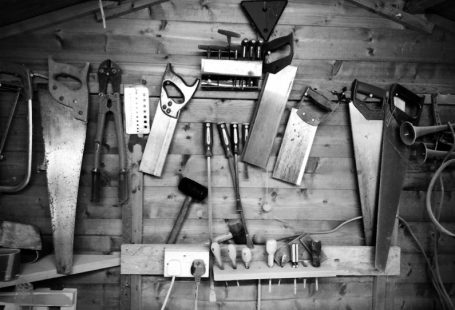Maintaining the Sharpness of Your Carving Tools
Carving tools are essential for anyone who enjoys woodworking or sculpting. Keeping these tools sharp is crucial for achieving clean, precise cuts and detailed work. Over time, the blades of carving tools can dull from use, impacting their performance. Fortunately, there are several simple yet effective ways to maintain the sharpness of your carving tools and ensure they remain in top condition for years to come.
Understanding the Importance of Sharp Tools
Sharp carving tools are not only easier to use but also safer. Dull blades can slip and cause accidents, leading to injuries and ruining your workpiece. Additionally, sharp tools produce cleaner cuts, resulting in a more professional-looking finished product. By regularly maintaining the sharpness of your carving tools, you can work more efficiently and achieve better results.
Choosing the Right Sharpening Method
There are various methods available for sharpening carving tools, each with its advantages and limitations. The choice of sharpening method often depends on personal preference and the type of carving tools you own. Some common sharpening techniques include using sharpening stones, sandpaper, or power sharpeners. Experiment with different methods to find the one that works best for you and produces the desired sharpness for your tools.
Regular Honing for Maintenance
Honing is a crucial step in maintaining the sharpness of your carving tools. Honing helps realign the blade’s edge, keeping it sharp and ready for use. Regular honing can be done using a leather strop or honing rod. Simply run the blade along the strop or rod several times to remove any burrs and maintain the sharpness of the edge. Incorporating honing into your routine can extend the time between sharpening sessions and ensure your tools are always sharp when you need them.
Cleaning and Storing Your Tools Properly
Proper cleaning and storage are essential for preserving the sharpness of your carving tools. After each use, make sure to clean off any debris or sap that may have accumulated on the blade. Use a soft cloth or brush to remove any residue, being careful not to damage the edge. Once clean, store your tools in a dry place to prevent rust and corrosion. Consider using blade protectors or sheaths to keep the edges safe and sharp while in storage.
Avoiding Excessive Force and Improper Use
One of the most common causes of dull carving tools is excessive force and improper use. Applying too much pressure when carving can cause the blade to dull quickly and lead to chipping or bending. Instead, let the sharpness of the tool do the work for you. Use a controlled and steady hand to guide the tool through the material, allowing the sharp edge to make clean cuts without unnecessary force. By using your carving tools properly, you can maintain their sharpness for longer periods.
Investing in Quality Tools and Materials
Lastly, investing in quality carving tools and materials can help maintain their sharpness over time. High-quality tools are often made from durable materials that hold their edge longer and are easier to sharpen. While it may be tempting to opt for cheaper alternatives, investing in well-made carving tools can save you time and money in the long run. Additionally, using high-quality materials for your projects can reduce wear and tear on your tools, ensuring they stay sharp for longer.
In Summary
Maintaining the sharpness of your carving tools is essential for achieving the best results in your woodworking or sculpting projects. By understanding the importance of sharp tools, choosing the right sharpening method, regularly honing your tools, cleaning and storing them properly, avoiding excessive force, and investing in quality tools and materials, you can ensure your carving tools remain sharp and efficient for years to come. Incorporate these practices into your routine to enjoy the benefits of sharp carving tools and elevate your craft to new heights.





